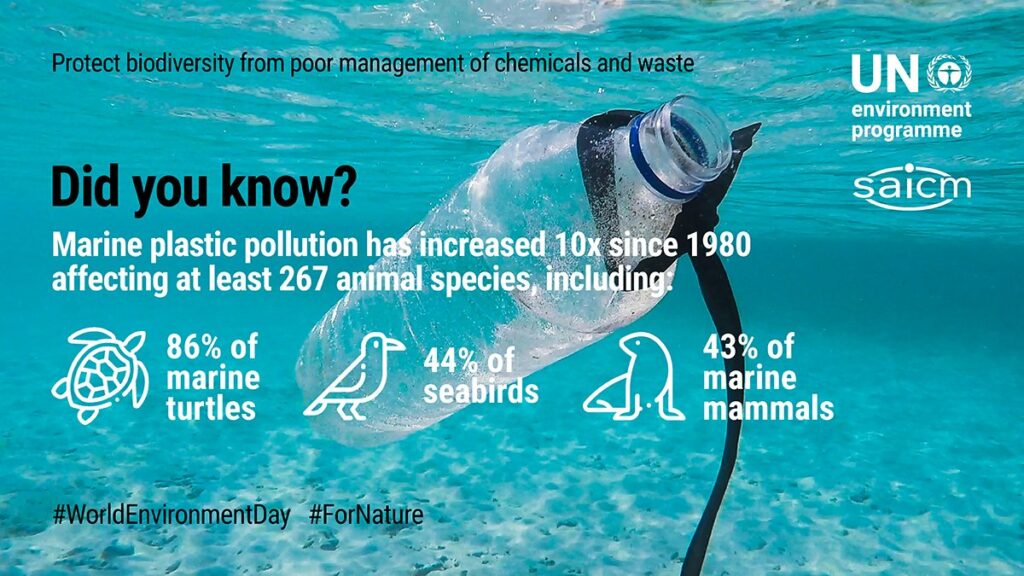
Millions of Americans Affected by Toxic “Forever Chemicals” in Drinking Water Systems
Millions of Americans rely on drinking water systems that have recently exceeded new limits for toxic “forever chemicals” known as per- and polyfluoroalkyl substances (PFAS), according to the Environmental Protection Agency (EPA). These chemicals have been found in 608 systems across the country, serving nearly 35 million people. An additional 13 million people drink water from systems that have detected the chemicals at levels requiring reporting to the EPA. These findings highlight the urgent need to address the issue of PFAS contamination in drinking water systems.
Sustainable Development Goals (SDGs) Impacted:
- Goal 6: Clean Water and Sanitation
- Goal 3: Good Health and Well-being
- Goal 11: Sustainable Cities and Communities
Background
PFAS are highly persistent chemicals that have been widely used in various industries for decades. They can accumulate in the environment and human bodies, increasing the risk of cancer and other serious health problems. In response to growing concerns, the EPA began requiring thousands of water systems to test for PFAS last year, marking the most widescale effort to track their spread across the United States.
SDGs Impacted:
- Goal 3: Good Health and Well-being
- Goal 6: Clean Water and Sanitation
Extent of Contamination
USA TODAY’s analysis reveals that large cities have exceeded PFAS limits at higher rates compared to smaller places. Approximately one-third of water systems serving over 100,000 people have surpassed the new limits, while for the smallest systems, it’s 1 in 10. It is important to note that these results represent single points in time and do not necessarily indicate an ongoing issue. However, the long-term trend of PFAS contamination is a significant concern.
SDGs Impacted:
- Goal 6: Clean Water and Sanitation
- Goal 11: Sustainable Cities and Communities
Addressing the Issue
Water systems are required to make changes only if their running annual average exceeds the new limits. It is crucial for cities to monitor their water regularly and take appropriate measures to address PFAS contamination. However, implementing the necessary changes comes at a significant cost. Installing new equipment to meet the new standards can cost millions of dollars for medium-sized cities. The EPA estimates that it will cost $1.5 billion per year for the country’s public drinking water systems to monitor their water for PFAS and find solutions to treat contaminated water sources.
SDGs Impacted:
- Goal 6: Clean Water and Sanitation
- Goal 9: Industry, Innovation, and Infrastructure
Enforcement and Penalties
The EPA is rolling out the PFAS limits in phases over the next several years to reduce the burden on cities. Water systems must complete their initial monitoring for PFAS within the next three years. From 2027 to 2029, systems will continue monitoring their levels and inform customers of the results and any violations. Enforcement of the limits can begin five years from now, but the potential penalties for violating the limits are still uncertain. It is crucial for cities to prioritize compliance and take proactive measures to avoid penalties.
SDGs Impacted:
- Goal 6: Clean Water and Sanitation
- Goal 11: Sustainable Cities and Communities
Conclusion
The presence of toxic “forever chemicals” in drinking water systems across the United States poses a significant threat to public health and the environment. It is essential for water systems to adhere to the new PFAS limits, monitor their water regularly, and take appropriate actions to ensure clean and safe drinking water for all. The implementation of sustainable solutions and investments in infrastructure are crucial to address this pressing issue and achieve the Sustainable Development Goals.
SDGs, Targets, and Indicators
-
SDG 6: Clean Water and Sanitation
- Target 6.3: By 2030, improve water quality by reducing pollution, eliminating dumping and minimizing release of hazardous chemicals and materials, halving the proportion of untreated wastewater, and substantially increasing recycling and safe reuse globally.
- Indicator 6.3.2: Proportion of bodies of water with good ambient water quality.
-
SDG 3: Good Health and Well-being
- Target 3.9: By 2030, substantially reduce the number of deaths and illnesses from hazardous chemicals and air, water, and soil pollution and contamination.
- Indicator 3.9.1: Mortality rate attributed to household and ambient air pollution.
Table: SDGs, Targets, and Indicators
| SDGs | Targets | Indicators |
|---|---|---|
| SDG 6: Clean Water and Sanitation | Target 6.3: By 2030, improve water quality by reducing pollution, eliminating dumping and minimizing release of hazardous chemicals and materials, halving the proportion of untreated wastewater, and substantially increasing recycling and safe reuse globally. | Indicator 6.3.2: Proportion of bodies of water with good ambient water quality. |
| SDG 3: Good Health and Well-being | Target 3.9: By 2030, substantially reduce the number of deaths and illnesses from hazardous chemicals and air, water, and soil pollution and contamination. | Indicator 3.9.1: Mortality rate attributed to household and ambient air pollution. |
Analysis
The article addresses the issue of toxic “forever chemicals” (PFAS) in drinking water systems in the United States. Based on the content of the article, the following analysis can be made:
1. Which SDGs are addressed or connected to the issues highlighted in the article?
The issues highlighted in the article are connected to the following SDGs:
- SDG 6: Clean Water and Sanitation
- SDG 3: Good Health and Well-being
2. What specific targets under those SDGs can be identified based on the article’s content?
Based on the article’s content, the following specific targets can be identified:
- Target 6.3: By 2030, improve water quality by reducing pollution, eliminating dumping and minimizing release of hazardous chemicals and materials, halving the proportion of untreated wastewater, and substantially increasing recycling and safe reuse globally.
- Target 3.9: By 2030, substantially reduce the number of deaths and illnesses from hazardous chemicals and air, water, and soil pollution and contamination.
3. Are there any indicators mentioned or implied in the article that can be used to measure progress towards the identified targets?
There are indicators mentioned in the article that can be used to measure progress towards the identified targets:
- Indicator 6.3.2: Proportion of bodies of water with good ambient water quality.
- Indicator 3.9.1: Mortality rate attributed to household and ambient air pollution.
The article discusses the presence of PFAS chemicals in drinking water systems, which can affect water quality. The proportion of bodies of water with good ambient water quality can be measured to assess progress towards improving water quality (Indicator 6.3.2). Additionally, the article mentions the health risks associated with PFAS chemicals, indicating a potential impact on mortality rates attributed to pollution and contamination (Indicator 3.9.1).
Table: SDGs, Targets, and Indicators
| SDGs | Targets | Indicators |
|---|---|---|
| SDG 6: Clean Water and Sanitation | Target 6.3: By 2030, improve water quality by reducing pollution, eliminating dumping and minimizing release of hazardous chemicals and materials, halving the proportion of untreated wastewater, and substantially increasing recycling and safe reuse globally. | Indicator 6.3.2: Proportion of bodies of water with good ambient water quality. |
| SDG 3: Good Health and Well-being | Target 3.9: By 2030, substantially reduce the number of deaths and illnesses from hazardous chemicals and air, water, and soil pollution and contamination. | Indicator 3.9.1: Mortality rate attributed to household and ambient air pollution. |
Behold! This splendid article springs forth from the wellspring of knowledge, shaped by a wondrous proprietary AI technology that delved into a vast ocean of data, illuminating the path towards the Sustainable Development Goals. Remember that all rights are reserved by SDG Investors LLC, empowering us to champion progress together.
Source: usatoday.com

Join us, as fellow seekers of change, on a transformative journey at https://sdgtalks.ai/welcome, where you can become a member and actively contribute to shaping a brighter future.






